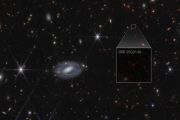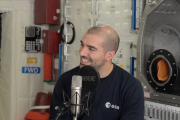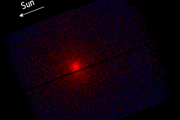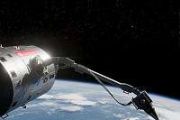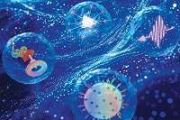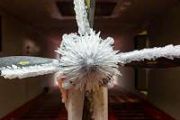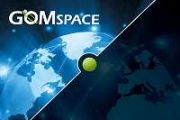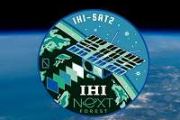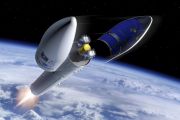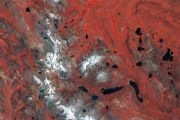
Copernical Team
Good to go – Let's Smile (episode 4)
 Video:
00:07:13
Video:
00:07:13
Smile is a brand-new space mission currently in the making. It will study how Earth responds to the solar wind and solar storms.
At the European Space Agency’s technical heart in the Netherlands, engineers have taken Smile through the final steps of testing and past its qualification and flight acceptance review – confirming that it is ready for launch in spring 2026.
This video let’s viewers peek into the testing and review process. It is the fourth episode in a series of short videos, and includes interviews with David Agnolon (ESA Smile Project Manager), Xia Jiayi (CAS Thermal
Week in images: 17-21 November 2025

Week in images: 17-21 November 2025
Discover our week through the lens
Lessons from the November 2025 solar storm

With two launches in the books, Blue Origin announces even more powerful New Glenn is coming
Verifying that you are not a bot
How small satellites can help the US win the space race
 Sending spacecraft into low Earth orbit could transform next-generation telecommunications, space exploration and national security. But that altitude - which begins roughly 60 miles above the planet's surface - is a fickle place due to atmospheric drag, and spacecraft would require a new kind of propulsion system to remain in orbit there.
"At the boundary of space, there's still enough re
Sending spacecraft into low Earth orbit could transform next-generation telecommunications, space exploration and national security. But that altitude - which begins roughly 60 miles above the planet's surface - is a fickle place due to atmospheric drag, and spacecraft would require a new kind of propulsion system to remain in orbit there.
"At the boundary of space, there's still enough re Strengthened collision avoidance system boosts UK satellite safety for LEO constellations
 GMV's UK subsidiary has taken a significant step in space safety with the development and deployment of an advanced collision avoidance system tailored for Low Earth Orbit (LEO) satellite constellations. This new service has played a key role in securing new agreements with the Space Data Association (SDA), an international group focused on promoting safe and sustainable space operations.
GMV's UK subsidiary has taken a significant step in space safety with the development and deployment of an advanced collision avoidance system tailored for Low Earth Orbit (LEO) satellite constellations. This new service has played a key role in securing new agreements with the Space Data Association (SDA), an international group focused on promoting safe and sustainable space operations. Radiation hardened circuit platform expands space electronics development
 BAE Systems has unveiled new advances for its radiation-hardened 12 nanometer RH12 Storefront technology, designed to support space missions requiring resilient integrated circuits. The RH12 Storefront offers a comprehensive library of application-specific integrated circuit development tools and proven intellectual property cores, allowing customers to produce system-on-chip solutions suited to
BAE Systems has unveiled new advances for its radiation-hardened 12 nanometer RH12 Storefront technology, designed to support space missions requiring resilient integrated circuits. The RH12 Storefront offers a comprehensive library of application-specific integrated circuit development tools and proven intellectual property cores, allowing customers to produce system-on-chip solutions suited to Chinese experiment tests lunar construction bricks after space exposure
 China has advanced its lunar exploration program with the return of experimental lunar regolith bricks, which spent a year exposed to the space environment aboard China's space station. These bricks, developed by Ding Lieyun and a team from Huazhong University of Science and Technology, were retrieved last week on the Shenzhou XXI spacecraft and found in good condition during initial inspections
China has advanced its lunar exploration program with the return of experimental lunar regolith bricks, which spent a year exposed to the space environment aboard China's space station. These bricks, developed by Ding Lieyun and a team from Huazhong University of Science and Technology, were retrieved last week on the Shenzhou XXI spacecraft and found in good condition during initial inspections Cassini study reveals organic compounds from Enceladus ocean plume
 Scientists analyzing NASA Cassini data have identified previously unknown organic compounds in ice particles emitted from Saturn's moon Enceladus. Evidence suggests these molecules originated from the moon's subsurface ocean and may indicate active organic chemistry beneath the icy shell.
A recent study published in Nature Astronomy reports the presence of both familiar and new molecules i
Scientists analyzing NASA Cassini data have identified previously unknown organic compounds in ice particles emitted from Saturn's moon Enceladus. Evidence suggests these molecules originated from the moon's subsurface ocean and may indicate active organic chemistry beneath the icy shell.
A recent study published in Nature Astronomy reports the presence of both familiar and new molecules i Redwire to Deliver Spacecraft for DARPA Otter VLEO Demonstration
 Redwire Corporation has secured a 44 million dollar phase 2 contract from the Defense Advanced Research Projects Agency to advance the Otter Very Low Earth Orbit mission. The contract supports the completion, manufacturing, and delivery of a spacecraft that will demonstrate the first air-breathing platform in VLEO, using Redwire's SabreSat design.
Tom Campbell, President of Space Missions
Redwire Corporation has secured a 44 million dollar phase 2 contract from the Defense Advanced Research Projects Agency to advance the Otter Very Low Earth Orbit mission. The contract supports the completion, manufacturing, and delivery of a spacecraft that will demonstrate the first air-breathing platform in VLEO, using Redwire's SabreSat design.
Tom Campbell, President of Space Missions 




